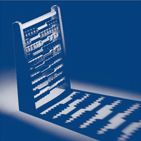Background
The Government introduced the cycle to work scheme almost 20 years ago as an incentive to promote the health benefits of cycling to work, as well as its potential to reduce pollution from motor vehicles. The scheme provides an annual tax exemption for employees, which allows employers to loan bicycles and cyclists’ safety equipment to employees as a tax-free benefit.
Many schemes are operated via a salary sacrifice arrangement in order that the cost of providing the equipment can be recovered from the employee. This way employers benefit from savings on national insurance contributions and employees can save up to 42% of the cost of the bicycle when taking account of the potential income tax and national insurance benefits. As such it continues to offer an attractive tax-free alternative way of providing an employee benefit.
Detail
In order to take advantage of the tax free benefits offered by the cycle to work scheme a number of conditions must be satisfied, and there are other impacts of offering such a scheme that must also be carefully considered.
Broadly the offer of bicycles and equipment must be generally made available to all employees and those employees taking up the offer must use the bicycle mainly (at least 50%) for ‘qualifying journeys’. A qualifying journey is one made between home and the workplace, or between one workplace and another however there is no requirement for an employee to keep mileage logs.
There must also be no option at the start of the hire agreement, whether express or implied, for the employee to purchase the cycle or equipment at the end of the hire agreement. Such an option would instead make the arrangement a hire purchase agreement and it would no longer be eligible for the tax exemption. It is permissible for a separate agreement to be entered into to buy the cycle and/or equipment to be entered into at the end of the hire period.
Where the scheme is made available to an employee under a salary sacrifice arrangement there will need to be a consumer hire agreement in place which will usually be between the employee and the employer, although it could be with a third party, such as a scheme provider.
A feature of the cycle to work scheme is also that there is no limit on the value of the bicycle that can be provided to the employee. So it offers an attractive means for the employee to obtain a more high performance bicycle than they may otherwise be able to afford themselves. However, an employer should be aware that where the total value of the bicycle being provided exceeds £1,000 then the consumer hire agreement must comply with the requirements of the Consumer credit Act 1974 (CCA). This will require the employer, or third party scheme provider, to be authorised by the Financial Conduct Authority (FCA). Under such circumstances it may be easier for an employer to use a third party scheme provider already regulated by the FCA.
Another issue to be aware of is that a salary sacrifice arrangement cannot be used if, in doing so, an employee’s gross pay falls below the national minimum wage. In addition there can be some legal restrictions where cycles are offered to under 18’s under some agreements.
It is also important under a salary sacrifice scheme that before an employee signs up to such a scheme they consider the impact it may have on their entitlement to certain state benefits. This is due to the fact it will reduce the employee’s gross pay and the NIC they pay. The entitlement to some benefits is based on how much the employee earns, and others on how much NICs they have paid. It can also impact on pension scheme contributions and holiday pay entitlement depending upon an employee’s contract.
The above is only an outline of the main advantages and points to consider when considering offering employees a cycle to work scheme. If you would like further information regarding a cycle to work scheme please contact our Assistant Tax Manager, Jamie Poulton.
To see our other news items please visit our Muras Baker Jones – Blog.



